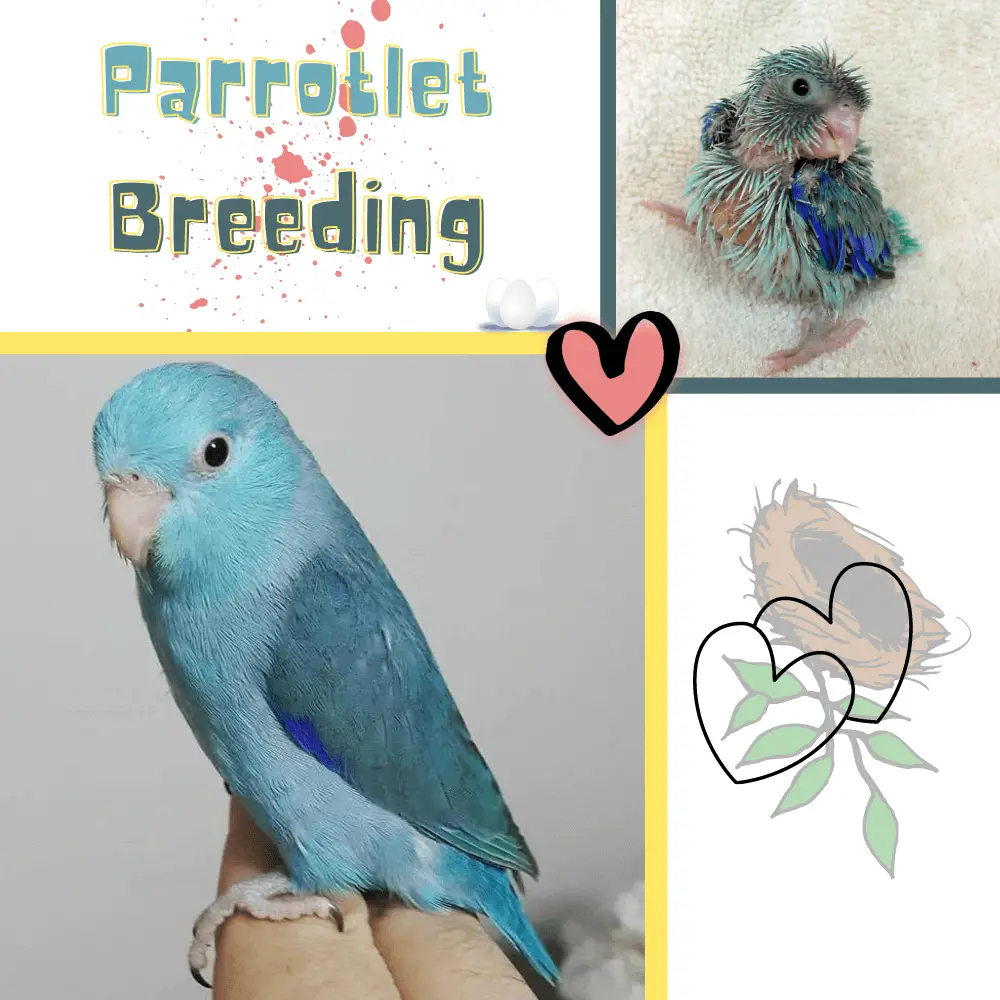Parrotlet breeding: The reproduction of the parrotlet is a subject that I had the possibility of treating a long time ago.
Because quite simply, I was able to discuss with breeders of Celestial parrotlet and I even had the opportunity to visit superb breeding that you can see here. It was just to tell you that I already had a base for blackening paper.
However, I took my trouble patiently while waiting to have my own feedback on the reproduction of the parrotlet.
I wanted to cross-check all the information that I collected before and those that I could observe during the reproduction of my pair of parrotlet.
In fact, that was one of my goals during last year’s review. So, now is the time for me to empty my bag in this article and tell you about this experience.
Reproduction of a bird
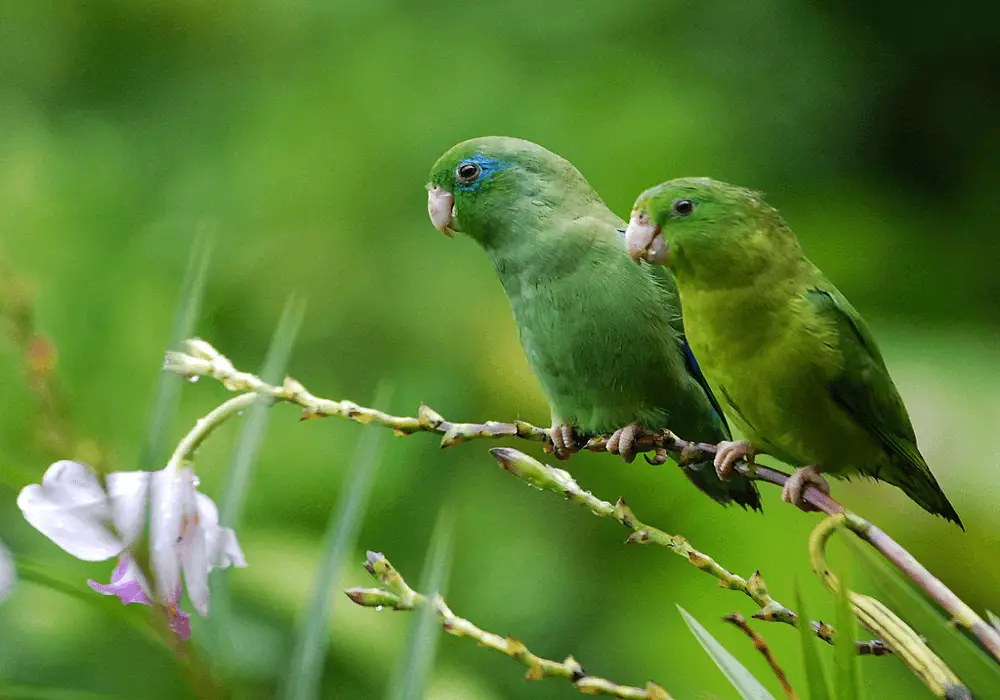
Reminder!!! Above all else, and regardless of the species, reproduction in birds is an act that is being prepared.
Rich food, vitamins, and calcium at will … Without forgetting to check that the couple is old enough to reproduce.
Sexual maturity
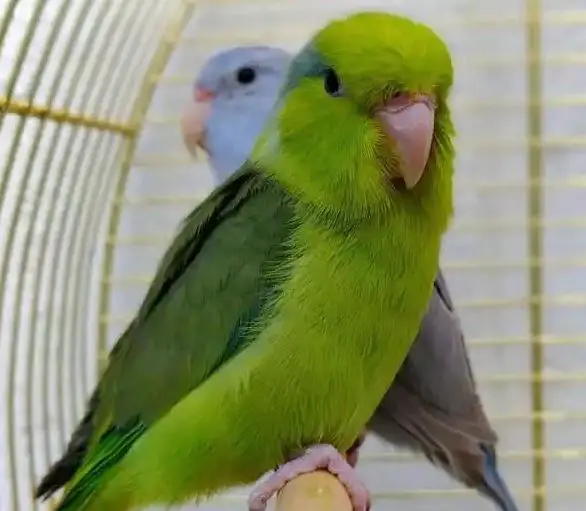
The parrotlet is considered one of the smallest parrots held in captivity. On the other hand, it is at the top of the pyramid for sexual maturity. From the 6th month, he is already able to reproduce.
BUT BEWARE !!! It is important to wait at least a year and more, especially to reproduce the female. Its health depends on it and the risk of egg-laying sickness is never far away …
Parrotlet Mating
Regarding the act itself, saying, that there are similarities with mating in Catherine parakeet. I will describe it anyway but don’t get twisted eh lol.
The female squats on the perch, the male stands on its side, positioning one leg on the back of the female and the other holding it on the perch, then it zigzag to mate.
But more often the couple prefers privacy and rather reproduces in the nest. Don’t ask me how they do it, I’d rather leave it there ?
Parrotlet nest
For Parrotlet breeding, I use the same type of nest as in Catherine parakeets. It is rectangular in shape, which allows for two living spaces.
A sort of room at the entrance and the other room at the back for brooding. Just above a hatch to visit the nest for routine checks and cleaning.
The dimensions of the nest are as follows: L 29cm, W 14.5cm, and H 14cm
Spawning and brooding
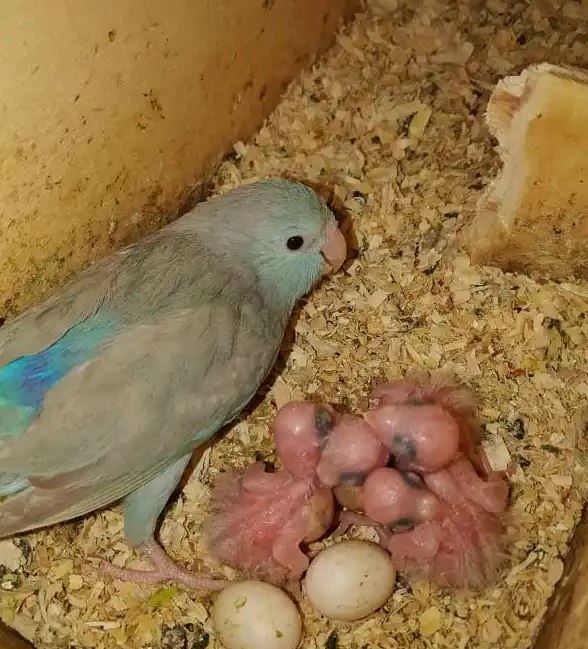
Although this species is small in size, the female lays an average of 6 eggs but sometimes more up to 8 eggs.
The incubation period in the parrotlet is 19 days and it is the female who sticks to it to incubate.
During this period, the male is supporting to brood with it or replace it temporarily. But his main role is to feed his female in the nest. So don’t be surprised to see him eat a lot.
Candling eggs
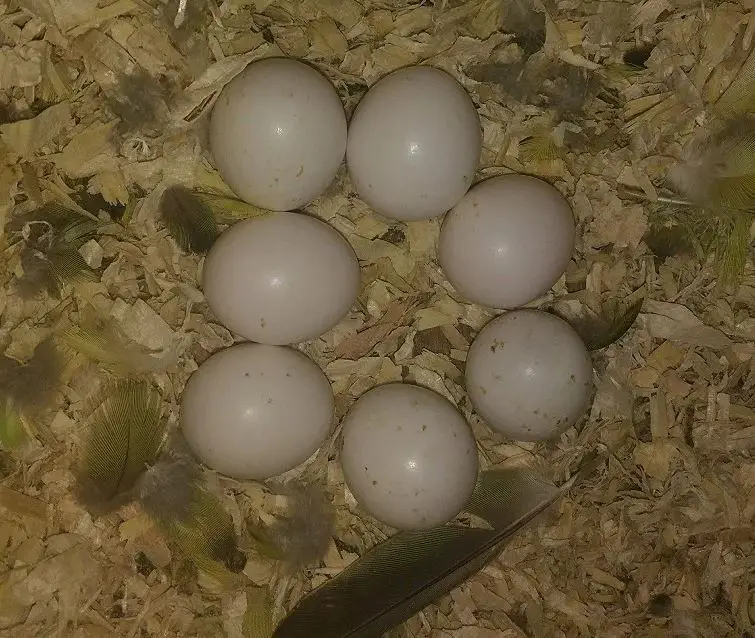
For candling the eggs, it is almost the same principle in all species. However, depending on the species, you will have to find a ploy and adapt to its behavior.
In the parrotlet, I start candling from eggs on the 6 to days after brooding. But to get there it will be necessary to find an agreement with the mother because yes the species is a little ferocious when it comes to its offspring.
Having said that, I did not find any difficulty with my relationship. Admittedly, the female showed her displeasure, but she understood that it was temporary and quick.
Tip: To access the nest quietly, just before, I change the food then I warn the occupants of the nest that I am there and that I need to counter the nest. The parents come out and go to the well-stocked bowl.
Egg hatching, feeding
The moment that every enthusiast awaits is the hatching of the eggs. In parrotlet, this happens from the 19th day of brooding. But always add the uncertainty of 2 to 3 days.
For parents, it’s the rush, especially if the brood is large. Food should be plentiful and varied.
In addition to a good mixture of seeds, it is important to provide egg mash and fruit. The water must be changed regularly to avoid the stagnation of residues that the parents leave in the trough.
Banding chicks
The day on which the chicks were banded cannot be estimated with certainty. Everything will depend on their development depending on their number but also on the quality of the feeding of the parents.
But from the 8th day, we can start to check if the ring will hold. This sometimes requires several attempts at ringing before the ring no longer falls. Sometimes it becomes tedious but it is a way not to miss the banding.
Baby parrotlets
SOURCE: Cynthia M Foreman -Dumont KikuandHoshiDumont

